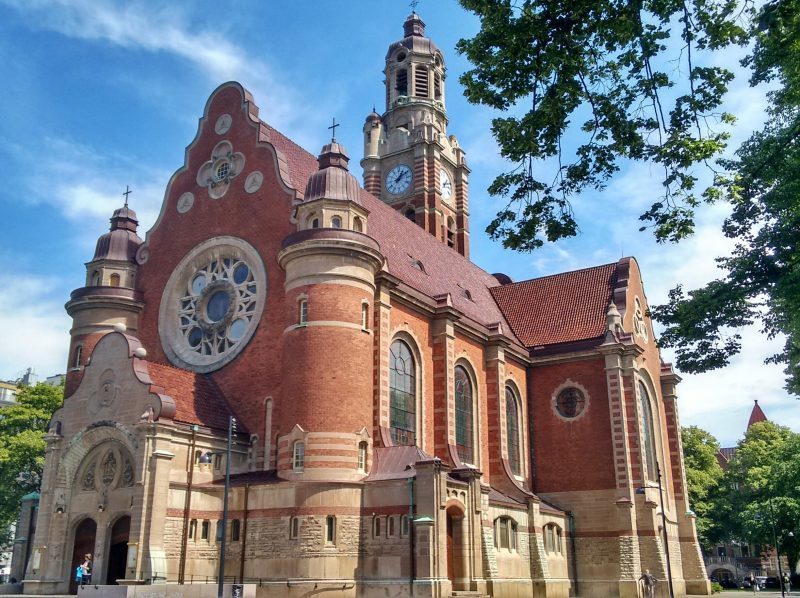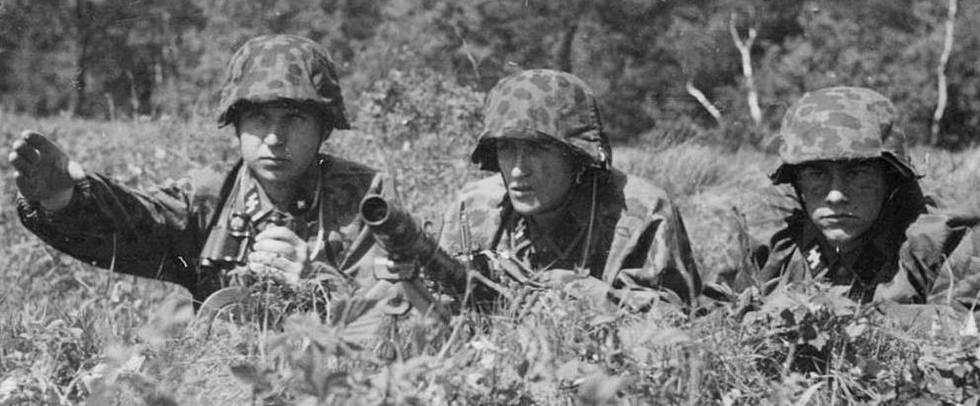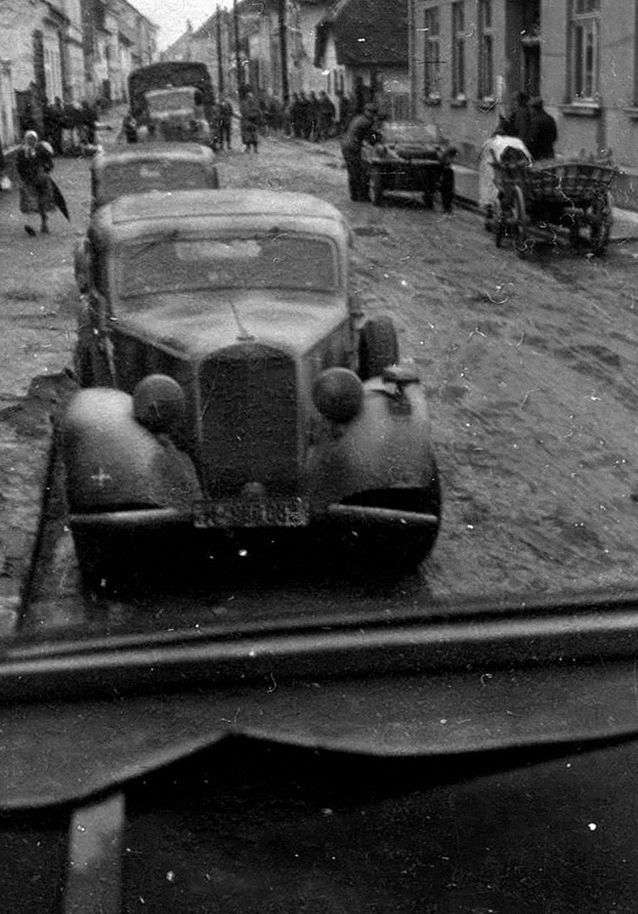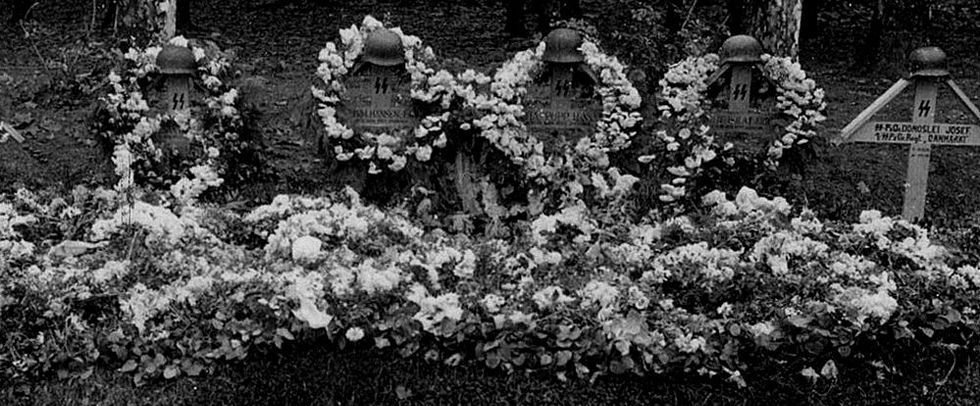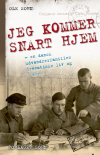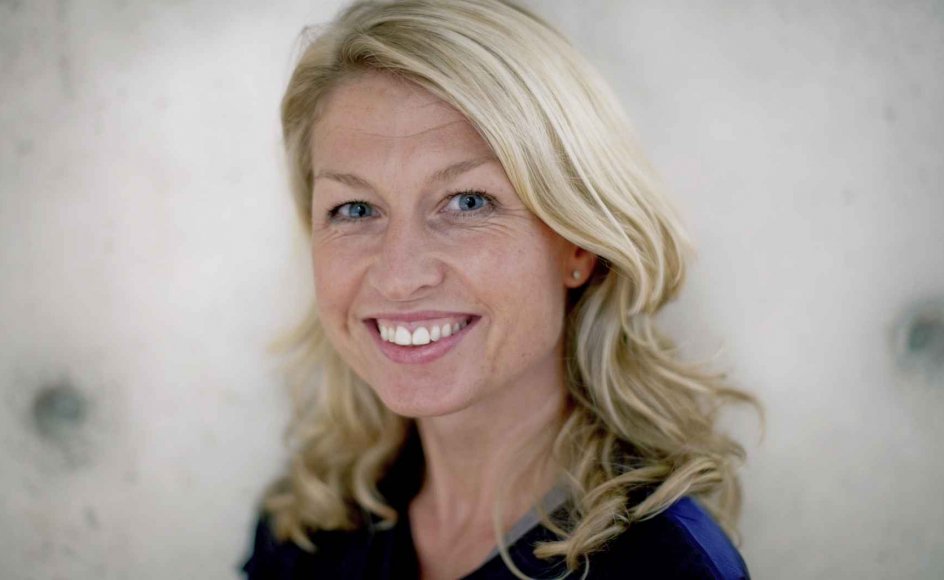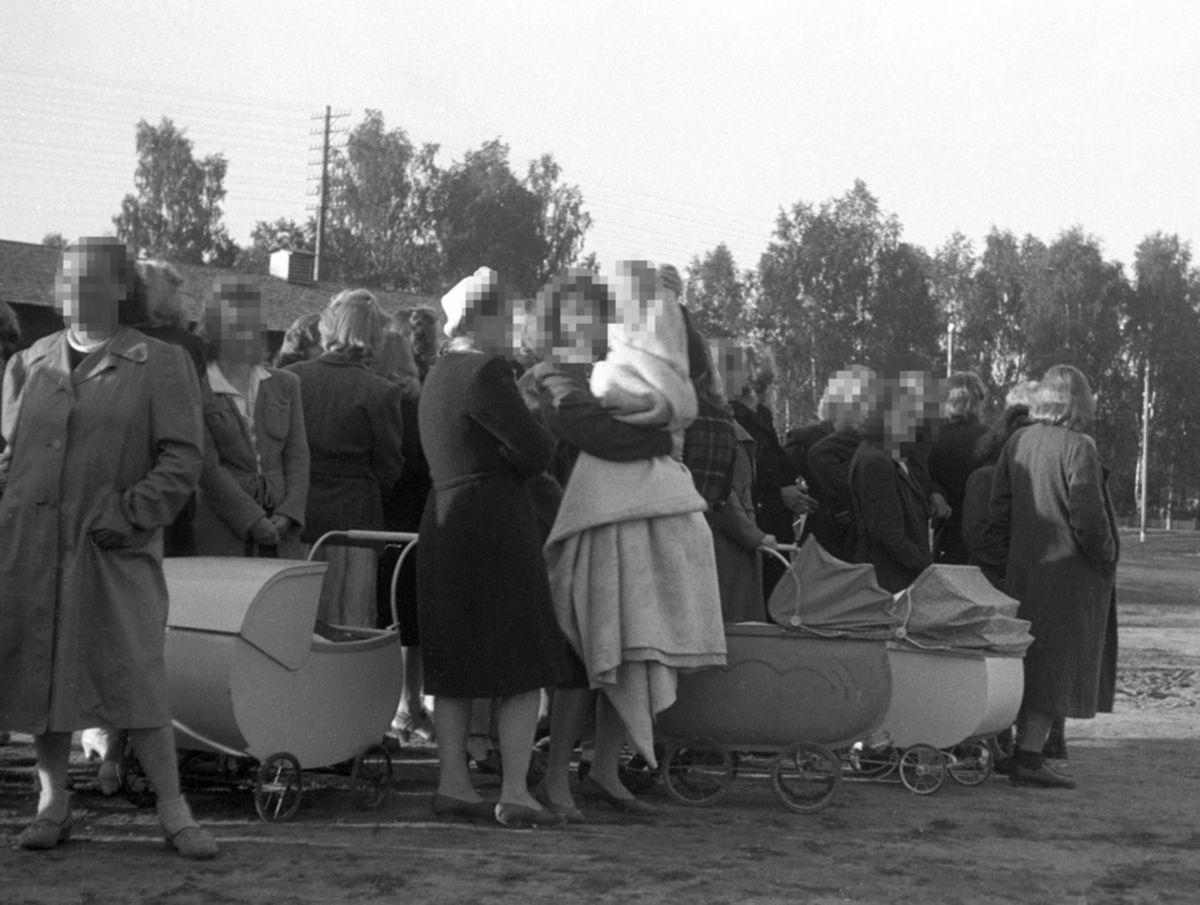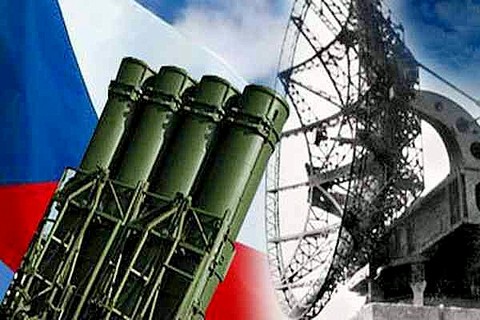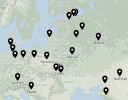Regarding the historic relation between Denmark and Russia and before that the Soviet Union, one question is how many fought the Soviet Union, and how of them died as a result. Below I mainly work around the case of the Danish participation on the Eastern Front though other Scandinavian countries are also mentioned. After having gone through the links and documents it seems the impact of the Danish war effort was more in favour of the German forces than the allied. After WW2, Denmark was counted as an allied, but words aside? Since then Denmark has been very eager to support the NATO campaigns and war effort in Yugoslavia, Afghanistan, Libya, Syria, Iraq which is actually a bit ironic in the sense that these actions could be seen as more in line with the efforts on the Eastern Front in WW2, since these more recent wars have been fought mainly at the behest of the US.
As I was watching an interview in Russian with a historian and author, Igor Pyhalov, he presented the participation of the European nations on the side of Hitler against the Sovjet Union. The video was
Разведопрос: Игорь Пыхалов про гитлеровский евросоюз, часть первая
Igar Pyhalov mentions that Denmark had 36 dead and wounded as a result of the move by Germany to occupy Denmark on April 9, 1940.
Regarding the German war effort, Pyhalov claims that 200 Danes and 300 Norwegians joined SS Division Viking already in 1940. This number rose later after operation Barbarossa was launched against the Soviet Union in June 1941.
The author is puzzled by the fact that more people were more ready to die for Germany than for their own country. I tried to look up the the SS Division Viking, that Pyhalov mentioned:
5-я танковая дивизия СС «Викинг» — Википедия says it was established in 1940 on Nov 20th.
SS Division Viking has a very, very low profile on the
Danish Wiki! Moving on, the
Norwegian Wiki is much richer and mentions approximately 800 Norwegians were involved at one stage or another and explains that next to 2.SS-Panzer-Division Das Reich it was the most famous and infamous due to:
War crimes
Part of Wiking division soldiers take 9. July 1941 part 600 jewish massacre in Lvov in retaliation for the regiment commander in death.[2]
The division's soldiers murdered hundreds of jews Zloczowin castle in July 1941 the first days of Ukrainian volunteers with. The massacre stopped 295. infantry division, lieutenant colonel Helmuth Groscurth. 9. July 1941, the troops participated in the murder of the jews was Lvivissä in retaliation, the SS-Infanterie-Regiment Westland commander Hilmar Wäckerlen death. Adolf Storms was brought to court in 2009 on charges of 58 Hungarian jewish forced laborer for murder in Austria 29. in march 1945, but he died before sentencing.[1]
Einsatzgruppen D, einsatz commando 11 was moving division involved in 1942. It had at its disposal a mobile gas chamber undesirable persons, eliminated.[1]
The division involved also had the ahnenerbe to hear Dr. Herbert Jankuhnin led by the Sonderkommando janku steps, who collected art objects from the black sea region.[1]
4. The forest Division commander Karl Eglseer as well as the slovakian generals Gustav Malár and Jozef Turanec, who serve at the same time Miusjoen area in April 1942, criticized the Wiking soldiers indiscipline and widespread looting.[1]
Wiking-the division's units were involved in the Warsaw uprising in a bloody suppression. The rebels and the rebels held were executed and their hiding civilians were gathered together and shot. Wiking, and a few other SS division's soldiers also raped and firing indiscriminately on civilians.[3]
The
Swedish Wiki mentions that 260 people participated and possibly up to 500.
The
English Wiki mentions that 430 Finns participated but did not renew their two year contract, and they were replaced by Estonians
The
Finish Wiki mentions that 1400 Finns participated. This Wiki has a list of some of the criminal activities, mainly revenge killing, killing of Jews and looting.
The
Portugese Wiki describes details about the location of major battle
The
German Wiki has a list of all the groups and includes some of the war crimes.
The
Russian Wiki claims only 1000 or 10 % of the 11000 man large division were foreigners. a
Danish source claims 90 % were Germans adn the rest volunteers. The Russian Wiki gives a list of those who received high military honours like the Knights cross. Most appear to be German, but there are also a few others.
In the video interviews with Pyhalov he explains the circumstances surrounding the various European countries in WW2 not only Denmark and Norway.
0:16 Why had not emphasized the participation of the European countries Hitler coalition?
4:00 members of the coalition: Finland
5:55 Norway
27:55 Denmark
35:49 the Netherlands
46:56 Belgium
56:15 France
1:08:48 Austria
In part two other countries are mentioned:
The timing of the issue:
0:20 About different swastikas.
3:48 the Participation of Slovakia in the Second world war.
23:33 Croatia's Participation on the German side.
31:50 the Participation of Hungary in the Second world war.
48:16 The participation of Romania in world war II.
1:16:01 Spain.
1:12:08 Italy.
1:15:02 Bulgaria.
1:18:10 Poland.
1:22:41 Neutral States: Sweden and Switzerland.
I tried to look up some to these countries on the Wiki and while a number of 500,000 is mentioned for Poland Pyhalov. Poland does not even enter on the list of countries contributing to ther German forces in most Wikis, perhaps because it did not exist as a country at the time.
The English Wiki is
rather non specific in general.

en.wikipedia.org
From April 1940 forward, Himmler began recruiting men for the Waffen-SS from among the West and Northern European people of Norway and the Low Countries.
[1] In 1941, the SS-Viking Division composed of Flemish, Dutch, Danish, and Norwegian volunteers was formed and placed under German command.
[2] Shortly thereafter, Waffen-SS troops were added from Latvia, Estonia, and elsewhere.
[3]

en.wikipedia.org

de.wikipedia.org
The Danish volunteers were led by Christian Frederik von Schalburg as "Freikorps Danmark". The 1,000-strong Freikorps fought as a reinforced infantry battalion of the SS Division Totenkopf in the Battle of Demyansk, where Schalburg fell on June 2, 1942. In May 1943 the Freikorps was disbanded.
From the Danish volunteers of the disbanded Freikorps and from the Wiking Division the SS-Panzer-Grenadier-Regiment 24 "Danmark" of the new SS-Division Nordland was formed. It was used in autumn 1943, the partisan fighting in Croatia, where it participated in the burning of villages and mass shootings. In the Courland cauldron at the end of 1944, the Danes suffered heavy losses. At the end of April 1945, the remnants of the regiment were ordered to Berlin and grouped into a battle group, which was destroyed during the fighting in the city.
7800 Danes served in the Wehrmacht and the Waffen-SS, for the most part, in the Division "Nordland", of which 3980 fell.[12] about 2000 of these were members of the German ethnic group Nordschleswig.[13]
Sources for the above is:
12.
Europa unterm Hakenkreuz. Die Okkupationspolitik des deutschen Faschismus 1938–1945. Band 8:
Analysen, Quellen, Register.Hüthig Verlagsgemeinschaft, 1996, S. 166.
13.
↑ Rolf-Dieter Müller:
An der Seite der Wehrmacht. Hitlers ausländische Helfer beim ‚Kreuzzug gegen den Bolschewismus‘ 1941–1945. München 2007, S. 144–148.
Pyhalov mentions in his first
video that among Norwegians 101 were taken prisoners of war and among Danes 427. He concludes that while most preferred to stay at home, if one compares the action for Hitler with the resistance against then the action for Hitler was the predominant. In the Video this is around minute 32 to 34.
In a
Danish publication, Danske krigsfanger i sovjetiske lejre under og efter 2. verdenskrig Kildemateriale fra russiske arkiver Af Sigurd Rambusch I found the number of Danish POW in the Sovjet Union following WW2 to have been 700! Of these 200 were from the German minority in Southern Jutland. In this document they say that the number 700 is an approximation considering the complexity of the material and question. They also say it was about 10 % of the
Free Corps Denmark and those who went to the Eastern Front .
The
Russian Wiki about foreign assistance to Germany gives the groups and the number for several countries For Denmark it mentions 11,000 for Norway 6,000, but the sources are not rich, so it is hard to say how reliable they are.
Danske østfrontfrivillige under Holocaust – overblik mentions that 3300 were put in prison after war for active participation in the war. If one adds 3300 imprisoned to the 3980 fallen that the German source claims plus the 700 that ended up as POW and were not prosecuted in Denmark when they returned, then one reaches a number of close to 8000 people which is also close to the 7800 the German source mentioned as the number of participants. Another G
erman Wiki claims only 1750 lost their lives, but relying on Danish sources, while it still claims that 3300 went to prison after the war and mentioned the figure of 6000 as the total number of participants.
Knowing what losses the Eastern Front Soldier suffered, what other losses were there and these are the ones that are usually remembered.
Denmark in World War II - Wikipedia has:
About 380 members of the
resistance were killed during the war, they are commemorated in
Ryvangen Memorial Park. Roughly 900 Danish civilians were killed in a variety of ways: either by being caught in air raids, killed during civil disturbances, or in reprisal killings, the so-called "clearing"-murders. 39 Danish soldiers were killed or injured during the invasion, and four were killed on 29 August 1943 when the Germans dissolved the Danish government. Some sources estimate that about 360 Danes died in concentration camps. The largest groups of fatalities were amongst Danish merchant sailors, who continued to operate throughout the war, most falling victim to submarines. 1,850 sailors died. Just over 100 soldiers died as part of Allied forces.
Approximately 6,000 Danes were sent to concentration camps during World War II,
[42] of whom about 600 (10%) died. In comparison with other countries this is a relatively low mortality rate in the concentration camps.
If one add this up one gets 3650-4050. The losses on the Eastern Front range from 1750 -2000 (Danish figures) to 3980 (German figures) add to this the losses they caused among the people they fought or mistreated and one can begin to estimate what the balance was which is a needed consideration when confronted with the perspective the Russian historian lays out.
During the WW2 the people who directly fought on the Eastern Front were not very popular among all groups of the Danish population, at least the ones that came back for vacation had to face numerous physical conflicts.
From
Befrielsen 1945 - Frikorps Danmark og andre i tysk tjeneste there was if translated into English
In september 1942, 850 soldiers from Frikorps Denmark arrived in Copenhagen. It was Danes who had volunteered for the Nazi Germany war against the Soviet Union. After fierce battles on the eastern front, they had now been given a month's leave back home in Denmark, and it should be celebrated with a propaganda march through the city streets. However, if the free corps people had expected an enthusiastic welcome, they would be disappointed. Even though there were happy spectators at the beginning of the march, there were scolding at them everywhere. And when the free corps people visited their homes around Denmark, they got into numerous fights with other Danes. The vast majority of the population saw them and other countrymen in German service as traitors.
The occupiers saw the free Corps as German soldiers and attacked them as an attack on Germany. The targets therefore created serious political problems for the Danish government.
The above article says the vast majority, but actually there was no serious resistance until later in the Autumn of 1942 and only from the Communist Party that had been forbidden. Moreover those that joined had been given leave and promised by the Government they would not be persecuted later (But as we have seen the survivors were put in prison when the politicians had to wash their laundry). In fact more widespread sabotage only began in 1943: according to
Danish resistance movement - Wikipedia
One researcher wrote according to the
Wiki about the reception of the East Front soldiers in 1942:
Historian
Bo Lidegaard notes: "The relationship between the population and the corps was freezing cold, and legionnaires on leave time and again came into fights, with civilians meeting the corps' volunteers with massive contempt."
Ater WW II, in spite of prison and prohibitions there have been some that have wanted to commemorate the battles and losses of the Eastern Front including the ideals of National Socialism. Twice they have tried to make a monument in concrete and twice these have been blown up with explosives shortly after. [
Source]




